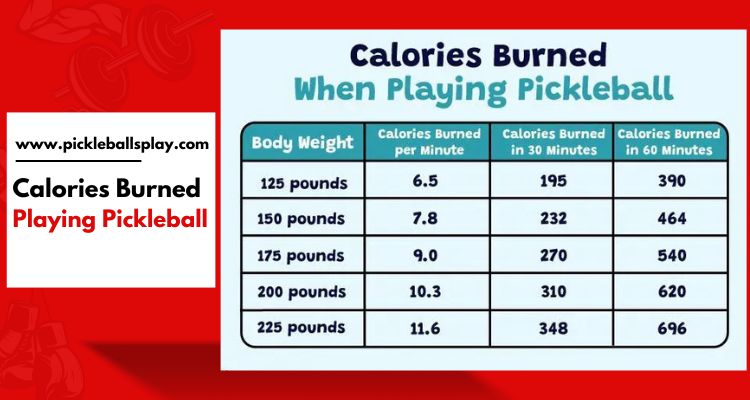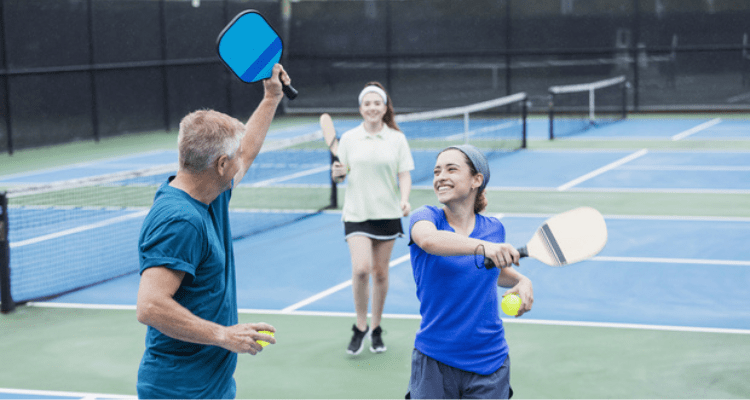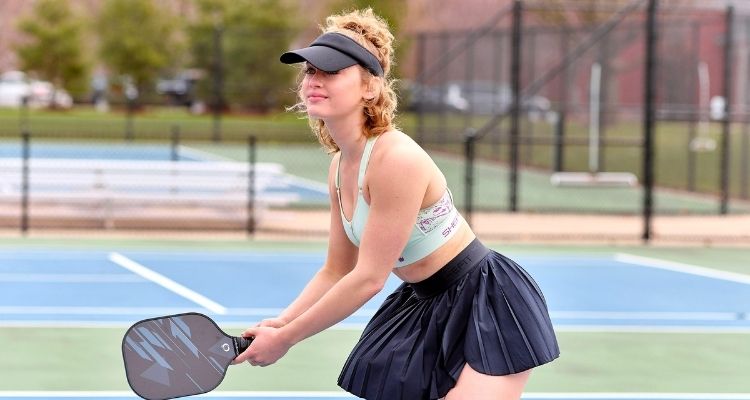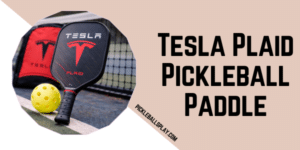Calories Burned Playing Pickleball is a dynamic, engaging sport that combines fun with fitness, making it a fantastic way to stay active. For players curious about the caloric impact of their time on the court, understanding how many calories burned playing pickleball can guide fitness goals, from weight management to cardiovascular improvement. This article explores the latest research on caloric expenditure in pickleball, key factors that influence burn rates, practical ways to enhance your workout, and the role of heart rate zones in optimizing calorie burn.

Why Measuring Calories Burned playing Pickleball Is Valuable
Tracking the calories burned during pickleball provides clarity on its role in your fitness routine. Whether you’re playing to shed pounds, maintain energy balance, or boost endurance, knowing the energy expenditure helps you align gameplay with dietary and lifestyle choices. Pickleball’s blend of bursts of activity and brief pauses makes it an effective calorie-burning exercise, comparable to other high-intensity interval training (HIIT) workouts.
How Many Calories Does Pickleball Burn?
The calories burned playing pickleball depend on factors like body weight, intensity, duration, and whether you’re playing singles or doubles. Recent studies classify pickleball as a moderate-to-high-intensity sport, with energy expenditure driven by quick lateral movements, paddle swings, and intermittent rest periods. Here’s a detailed look at caloric burn based on the latest data.
Caloric Burn Estimates by Weight and Intensity
The following table outlines average calories burned per hour, based on fitness tracker data and sports science research:
| Weight | Casual Doubles | Moderate Singles | Competitive Singles |
|---|---|---|---|
| 150 lbs | 250–350 calories | 350–450 calories | 500–600 calories |
| 180 lbs | 300–420 calories | 420–540 calories | 600–720 calories |
| 200 lbs | 350–475 calories | 475–600 calories | 700–900 calories |
- Casual Doubles: Leisurely play with shorter rallies, common in social settings.
- Moderate Singles: Steady-paced singles or competitive doubles with consistent movement.
- Competitive Singles: High-energy matches with aggressive play, typical of 4.0+ skill levels.
For instance, a 150-pound player might burn 250 calories in 30 minutes of casual doubles, while the same player could burn 360 calories in 30 minutes of intense singles. A 200-pound player in competitive singles could burn up to 475 calories in the same timeframe, per USA Pickleball data.
Calories Burned Per Minute
On average, pickleball burns 8–11 calories per minute:
- Low Intensity: 8 calories/minute (casual doubles).
- High Intensity: 10–11 calories/minute (competitive singles).
A typical 50-minute match (best of 3 games to 11 points) could burn 400–550 calories for a 150-pound player and 550–700 calories for a 200-pound player, rivaling activities like jogging (11 calories/minute).

Role of Heart Rate Zones in Caloric Burn
Heart rate zones provide insight into the intensity of your pickleball session and its impact on calorie burn. Most players operate in the moderate (50–70% of max heart rate) to vigorous (70–85% of max heart rate) zones during play, which maximize fat burning and cardiovascular benefits. A 2023 study found that competitive pickleball players spend 60–70% of their time in the vigorous zone, contributing to higher caloric expenditure.
- Moderate Zone: Burns 8–9 calories/minute, common in doubles.
- Vigorous Zone: Burns 10–12 calories/minute, typical in singles or intense rallies.
Using a heart rate monitor can help you stay in the vigorous zone longer, increasing calories burned by 15–20% compared to moderate play.
What Influences Caloric Burn in Pickleball?
Several factors determine how many calories you burn during a pickleball session. Recognizing these can help you adjust your play to meet fitness objectives.
- Body Weight: Heavier players expend more energy due to greater movement demands. A 200-pound player may burn 900 calories/hour in competitive play, compared to 600 for a 150-pound player.
- Intensity: High-energy play with longer rallies and rapid movements increases heart rate and caloric burn. Singles typically burns 20–30% more calories than doubles due to larger court coverage.
- Duration: Extended sessions amplify total calories burned. A 2-hour moderate session could burn 660–1,200 calories, depending on weight and intensity.
- Game Type: Singles involves more running and lunging, boosting caloric burn compared to doubles, where players share court responsibilities.
- Skill Level: Novices may burn more calories due to less efficient movement, while advanced players might use strategy to conserve energy.
- Environment: Outdoor play in heat, wind, or on uneven surfaces can raise energy expenditure by 5–10% compared to indoor courts.
- Body Composition: Higher muscle mass increases calorie burn, as muscle tissue is metabolically active.
MET Values for Precise Caloric Estimates
The Metabolic Equivalent of Task (MET) measures energy expenditure during activities. A 2018 study pegged pickleball’s average MET at 4.1, ranging from 1.5 (light play) to 7.7 (intense play). For context, tennis has a MET of 8, and badminton ranges from 5.5–7.
Use this MET formula for accuracy:
Calories burned per minute = (MET × 3.5 × body weight in kg) ÷ 200
Example for a 180-pound (81.6 kg) player:
- At MET 4.1 (moderate play): (4.1 × 3.5 × 81.6) ÷ 200 = 5.85 calories/minute; 351 calories/hour.
- At MET 7.7 (competitive play): (7.7 × 3.5 × 81.6) ÷ 200 = 11 calories/minute; 660 calories/hour.
Fitness trackers like Fitbit or Garmin report 400–650 calories/hour for moderate play, though individual physiology may affect precision.

How Pickleball Compares to Other Activities
Pickleball’s caloric burn is competitive with other sports, though court size and play style influence outcomes. Here’s a comparison for a 150-pound player:
| Activity | Calories Burned/Hour | Notes |
|---|---|---|
| Pickleball (Singles) | 350–600 | HIIT-style bursts, smaller court. |
| Tennis (Singles) | 414–500 | Larger court, more sustained running. |
| Badminton (Competitive) | 350–450 | Fast-paced, similar rally structure. |
| Racquetball (Singles) | 400–600 | High intensity, confined space. |
| Jogging (5 mph) | 540–600 | Steady-state, higher caloric burn. |
Pickleball burns about 20% fewer calories than tennis due to its smaller court (44×20 ft vs. 120×60 ft), but its stop-and-go nature enhances cardiovascular fitness.
Tips to Boost Calories Burned Playing Pickleball
Maximize your caloric burn with these practical strategies:
- Opt for Singles: Singles play increases movement, potentially burning 700 calories/hour.
- Ramp Up Intensity: Focus on powerful serves, quick volleys, and extended rallies to elevate heart rate.
- Play Longer: Extend sessions to 1–2 hours for cumulative calorie burn, with short breaks to sustain intensity.
- Use Proper Gear: Lightweight paddles and supportive shoes improve endurance for intense play.
- Add Drills: Incorporate side-to-side sprints or net drills to mimic match intensity.
- Track Progress: Wear a fitness tracker to monitor real-time caloric burn and adjust effort.
- Fuel Smartly: Stay hydrated and eat balanced pre-game meals to maintain energy.
Additional Health Benefits of Pickleball
Beyond calories burned, pickleball offers holistic health advantages:
- Heart Health: Its HIIT structure strengthens cardiovascular function.
- Joint-Friendly: Low-impact movements suit all ages, reducing injury risk.
- Mental Boost: Strategic play sharpens focus and reduces stress.
- Community Connection: Doubles fosters social bonds, encouraging regular play.

Player Experiences with Caloric Burn
Real-world data from players on forums like Reddit shows variability. A 200-pound male reported burning 1,200 calories in 2 hours of intense doubles, while a 175-pound female burned 800 calories in casual play. Competitive singles players frequently cite 600–650 calories/hour, consistent with MET estimates.
Frequently Asked Questions
How reliable are fitness trackers for pickleball calorie counts?
Fitness trackers offer decent estimates, typically 400–650 calories/hour for moderate play, but accuracy varies due to heart rate, body type, and device algorithms. For precision, use MET calculations or consult a professional.
Does outdoor vs. indoor pickleball affect calorie burn?
Outdoor play often burns 5–10% more calories due to wind, heat, or uneven terrain, which demand extra effort. Indoor play is more controlled but slightly less taxing.
Do beginners burn more calories than seasoned players?
Beginners may burn more due to inefficient movements and frequent ball-chasing, sometimes 10–15% more than advanced players who use strategic positioning to save energy.
Is pickleball better than walking for burning calories?
Pickleball burns more calories than walking. A 150-pound player burns 350–600 calories/hour in singles, vs. 240–300 calories/hour walking at 3.5 mph, with added cardiovascular perks.
Can regular pickleball play aid weight loss?
Playing 3–4 times weekly, burning 400–700 calories per session, can create a caloric deficit for weight loss when paired with a healthy diet, potentially leading to 0.5–1 pound lost per week.
Conclusion
The calories burned playing pickleball ranging from 250 to 900 per hour position it as a robust fitness activity for players of all levels. By leveraging factors like intensity, game type, and duration, you can tailor your sessions to meet weight loss or fitness goals. With added benefits like heart health and social engagement, pickleball is more than a game it’s a pathway to wellness. Hit the court, track your burn, and enjoy the rewards of this vibrant sport. For top-quality gear, explore retailers like Fresh Pickle.




